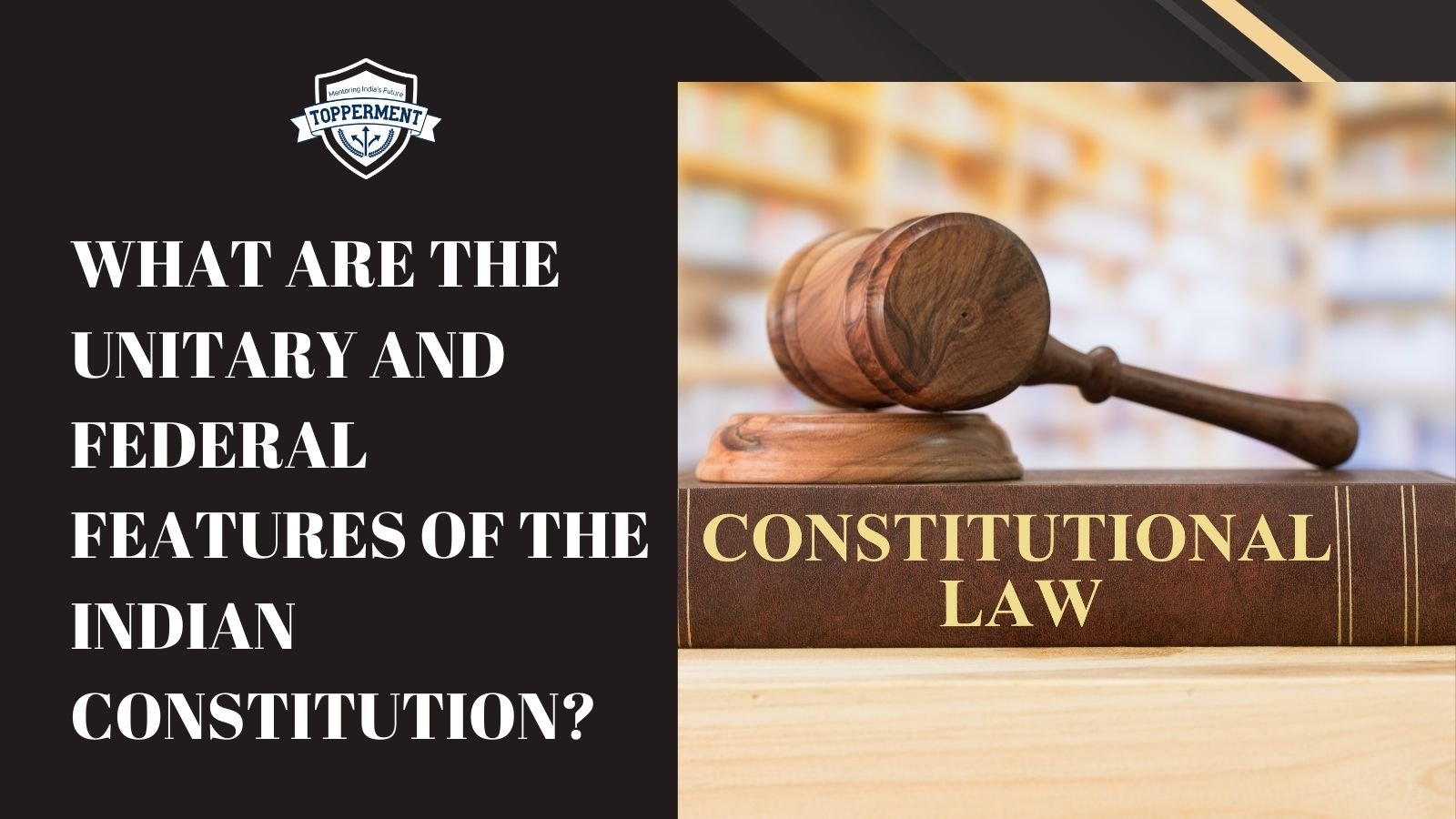The Indian Constitution provides for a federal system with a unitary bias. The Indian federal system is based on the Canadian model. Today we will be discussing in detail the Federal and Unitary features of the Indian Constitution which is a part of the UPSC Indian Polity Syllabus.
Federal Features Of The Indian Constitution
The Federal features of the Indian constitution are mentioned below.
1. The Features of the Indian Constitution is not only a written document but it is also the largest constitution in the world with a preamble, 448 articles, and 12 schedules.
2. The constitution establishes a dual polity that includes the union and it is endowed with powers to be exercised in the field assigned to them respectively.
3. The constitution also provides a bicameral legislature in which Rajya Sabha and Lok Sabha represent the states of the Indian Union and the people of India as a whole.
4. The constitution has divided the powers between the center and the states in terms of the Union List.
5. The constitution is the supreme law of the country and it has also established an independent judiciary headed by the supreme court to protect the supremacy of the constitution and settle the disputes between the center and the states.
Unitary Features Of the Indian Constitution.
The Unitary features of the Indian constitution are mentioned below.
· The constitution of India made sure that the center and the states must operate within a single frame.
· Whenever there is an emergency, the central government becomes powerful and the states go into total control of the center.
· Single Citizenship means that all the people irrespective of the state in which they reside are citizens of the country.
· Every state has a governor and they are appointed by the president. The governor acts as an agent of the center.
· The election commission conducts elections for central and state legislatures.
· The states are given representation in the upper house based on their population. · Lower courts are obligated to follow the rules set by the Supreme court.
So this is all about the Federal and Unitary features of the Indian constitution. The constitution is written in a unique way that combines the attributes of the unitary and federal governments.
Also Read
- What is GDP Price Deflator and Core Inflation? | UPSC Economics
- What is Green Accounting And Its Significance? | UPSC Economics
Follow Us For More Content On:
https://www.instagram.com/topperment/


